Timeless, Fearless, and Borderless: Eiko Ishioka
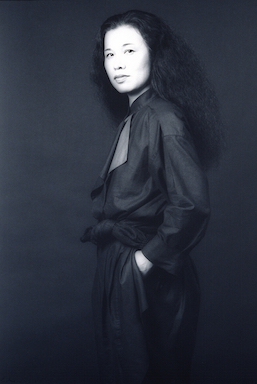 As a tribute to the extraordinary designer and art director Eiko Ishioka, whose international career spanned over 50 years, the Museum of Contemporary Art Tokyo is presenting the exhibition “Eiko Ishioka: Blood, Sweat, and Tears—A Life of Design.” It would be an understatement to call the exhibition, the world’s first large-scale retrospective for Ishioka, merely wonderful. Like walking into a film studio, numerous halls captivate you. Displays include posters from Ishioka’s stint with Shiseido; album jacket designs for legendary musician Miles Davis, music video concepts for experimental singer Björk, and costume makeup for enigmatic performer Grace Jones; life-size set and costume designs for films by superstar directors Francis Ford Coppola, Tarsem Singh, and Paul Schrader; and astounding collaborative work for opera, theater, circuses, and the Olympic Games. The museum brilliantly translates Eiko’s sensational works to the audience by encompassing all possible media – from print to video, wall-to-wall projected film, music, and costumed mannequins – to life-size stage sets.
As a tribute to the extraordinary designer and art director Eiko Ishioka, whose international career spanned over 50 years, the Museum of Contemporary Art Tokyo is presenting the exhibition “Eiko Ishioka: Blood, Sweat, and Tears—A Life of Design.” It would be an understatement to call the exhibition, the world’s first large-scale retrospective for Ishioka, merely wonderful. Like walking into a film studio, numerous halls captivate you. Displays include posters from Ishioka’s stint with Shiseido; album jacket designs for legendary musician Miles Davis, music video concepts for experimental singer Björk, and costume makeup for enigmatic performer Grace Jones; life-size set and costume designs for films by superstar directors Francis Ford Coppola, Tarsem Singh, and Paul Schrader; and astounding collaborative work for opera, theater, circuses, and the Olympic Games. The museum brilliantly translates Eiko’s sensational works to the audience by encompassing all possible media – from print to video, wall-to-wall projected film, music, and costumed mannequins – to life-size stage sets.
Ishioka’s early career peaked in the mid-sixties and seventies, just when Japanese media was radically changing. Born to a graphic designer father and educated at Japan’s most prestigious design institution, the Tokyo National University of Fine Arts and Music, she was inspired to go into the arts at an early age and did not waste time carving out her identity. It made perfect sense, therefore, for the museum to explore her career through the concepts “Timeless,” “Fearless,” and “Borderless,” which are the best modifiers to describe her artistic passion.
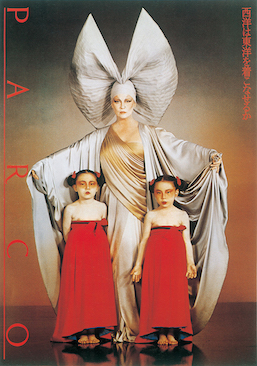
This sense of “fearlessness” had become a mantra for Ishioka’s exuberant creations. By the turn of the eighties, she had ventured abroad and earned her rightful place among the cream of the crop in music, opera, theater, and film. Among her most notable collaborations were with Francis Ford Coppola, which took her career in the direction of film poster design for the Japanese release of Apocalypse Now (1979) and eventually led to costume design for Coppola’s Dracula (1992), which gave her her first Academy Award for Best Costume. The exhibition honors a full documentation of Dracula with impressive costumed mannequins of its characters. The elaborate red dress on display exemplifies one of many stylistic preferences by Ishioka for this deep red color, which manifests sophistication, intelligence, and perhaps something forbidden or reckless. This intense affection for red spreads throughout the exhibition, evident as well in Ishioka’s directorial music video for Icelandic singer Björk’s song Cocoon. You can watch the full clip of the artistic manipulation of red tubes gyrating out of Björk’s nude body while she sings, wrapping her like a cocoon. Once again, Ishioka audaciously conveys the power of feminine sexuality and sensuality without inhibitions.
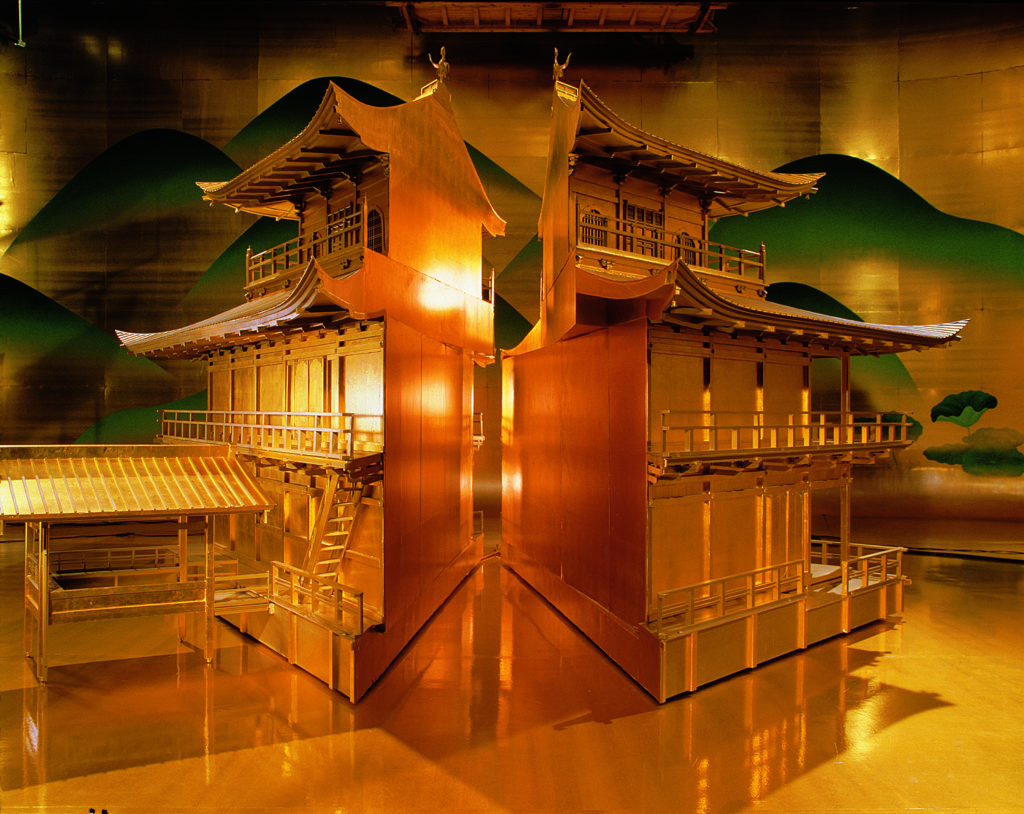
In film, Ishioka outdid even herself when she teamed with American director Paul Schrader for the set and costume design of MISHIMA—A Life in Four Chapters (1985), the surreal and controversial portrayal of novelist Yukio Mishima’s life. The footage on the walls strikes the viewer with rousing palpitation as the scenes and sets float like theatrical art pieces. The iconic Temple of the Golden Pavilion from Mishima’s novel Kinkakuji that appears in the movie captures the entire hall with its enormous scale and titillating gold appearance. Ishioka garnered the Best Artistic Contribution Award for this tremendous project.
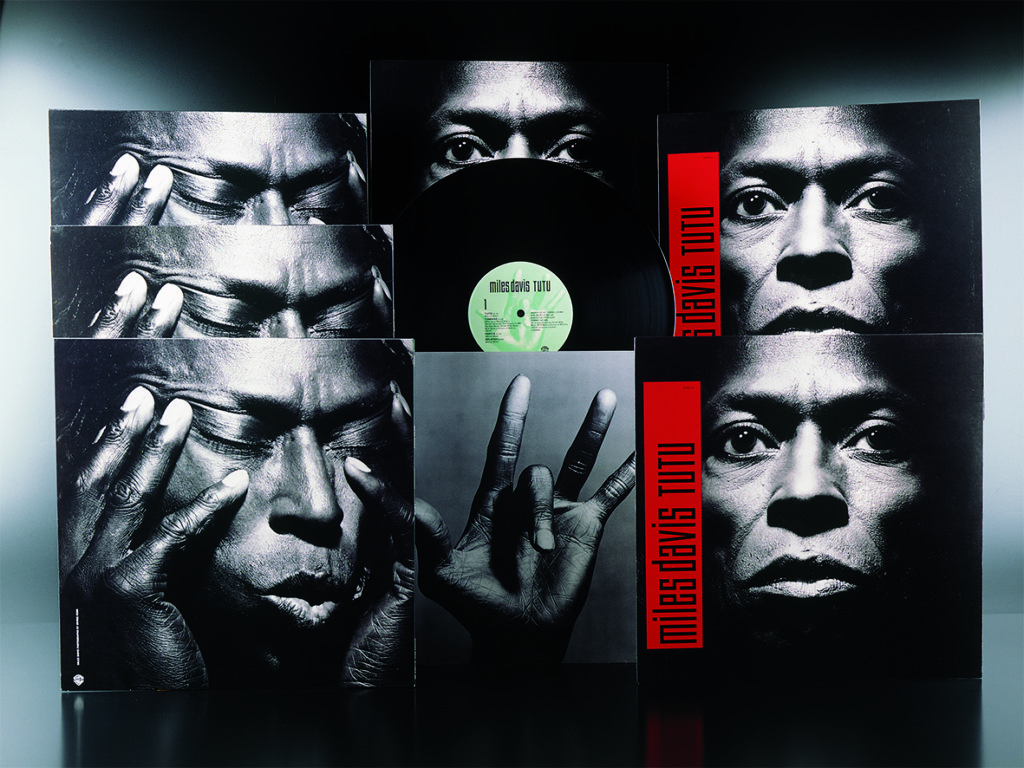
Jazz hero Miles Davis graces Ishioka’s design for the album jacket for TUTU (1987). The black and white photographs of the trumpeter represent Ishioka’s homage to South African civil rights, particularly during the height of the violence of apartheid in the eighties. This collaboration also presented Ishioka with the Grammy for Best Recording Packaging in 1987.
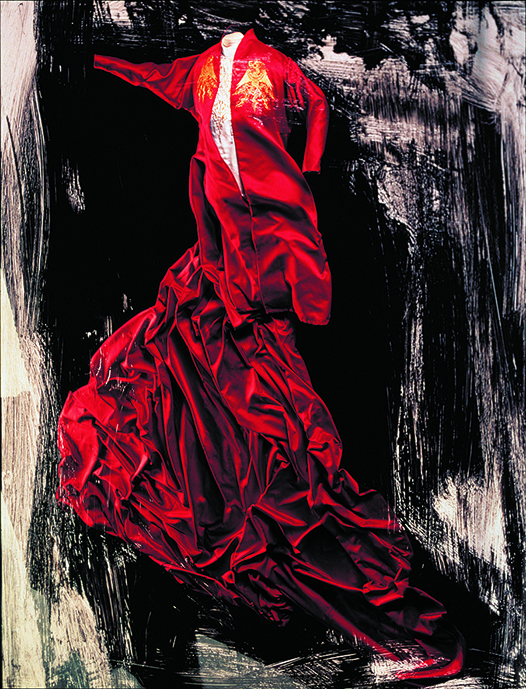
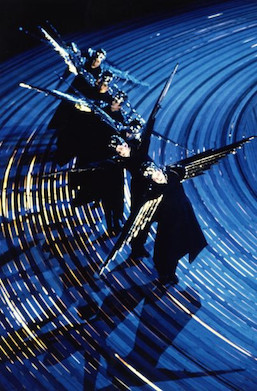
As Ishioka became an increasingly international designer, her “borderless” pursuits stretched further towards wider horizons, not only geographically, but also eclectically in various art forms—in opera, such as M. Butterfly (1988) and The Ring of the Nibelung (1998-1999) by world-renowned composer Richard Wagner; in theater, such as the musical play Spider-Man: Turn Off the Dark (2012); and in more international films, such as The Cell (2000), The Fall (2006), and Mirror Mirror (2012), all by Indian director Tarsem Singh. The museum’s halls unveil the extravagant costumes and film clips, covering the synopses of these adventure films. The costumes are marked by striking colors, elaborateness, exuberance, and sometimes the grotesque, with tinges of fantasy and the unexpected, such as voluptuous frills or a huge folded fan and a gooseneck on a head. The bewildering elements of surprise never escape one’s attention.
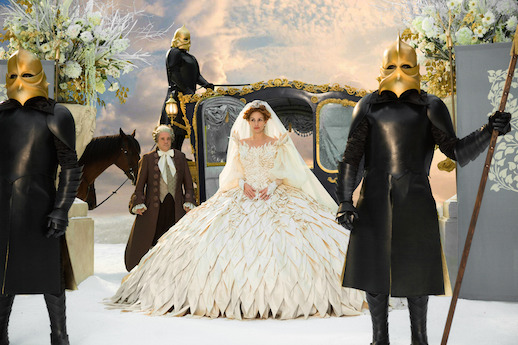
Probably no other Japanese female artist and designer transcended cultural barriers and all these platforms of visual expression as successfully as the phenomenal Eiko Ishioka. This powerful exhibition not only testifies to her stunning level of unique creativity, but also broadens perceptions of art and design as a courageous influence on the meaning of freedom of expression.
Alma Reyes
Alma Reyes


